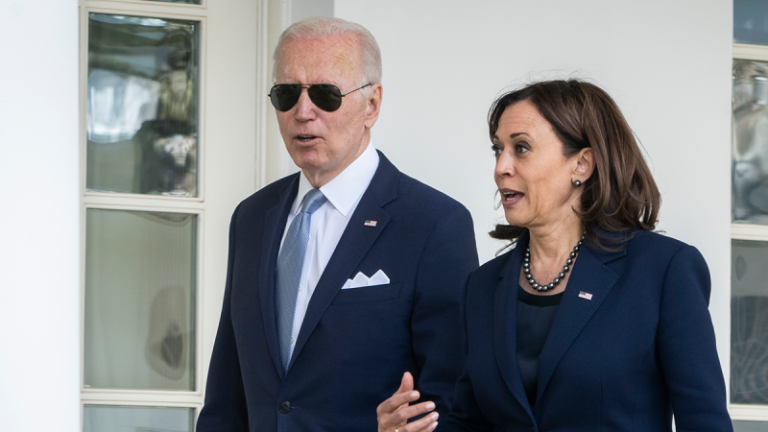Statistics Canada released its natural resource indicators report for the second quarter of 2025 on Thursday (September 25), which includes real gross domestic product (GDP), export and import data for Canadian resources.
According to the announcement, the real GDP for the sector decreased by 2.4 percent during the quarter, following a 1.8 percent rise in the first quarter, and outpaced the 0.4 percent decline in the broader Canadian economy.
Forestry saw the most significant decline, with real GDP falling by 4.9 percent; however, declines were felt throughout the sector. Real GDP of the energy sector dropped 2.5 percent, led by refined petroleum products decreasing 7.4 percent and electricity decreasing 3.5 percent. Minerals and mining decreased 1.2 percent, with primary metallic mineral products dropping the most in the category at 3.7 percent.
Exports declined by 6.6 percent, with forestry again registering the largest decrease at 15.5 percent, followed by energy decreasing 5.9 percent and minerals and mining dropping 4 percent. The reporting agency noted that declines coincided with increased tariffs on goods, especially steel and aluminum, entering the United States.
Meanwhile, imports increased by 6.6 percent during the quarter, following a 2.9 percent rise in the first quarter, and were mainly attributable to a 17.3 percent increase in mineral and mining imports, which included a 35.4 percent rise in metallic mineral products.
In major mining news this week, Freeport-McMoRan (NYSE:FCX) announced on Wednesday (September 24) that the closure of its Grasberg operations in Indonesia would be extended. The closure came after 800,000 metric tons of liquid materials entered its main Grasberg block cave on September 8, trapping seven workers. So far, the bodies of two workers have been recovered, and the remaining five workers are still missing.
Operations at two underground mines that were unaffected by the accident should restart mid-way through the fourth quarter, according to the company, but operations at the Grasberg block cave will not return to full production until at least 2027.
Grasberg is among the largest copper and gold mines in the world, contributing 1.7 billion pounds of copper and 1.4 million ounces of gold annually.
The announcement caused copper prices to surge by 5 percent in trading on Wednesday to US$4.84 per pound on the COMEX. Meanwhile, shares in Freeport tumbled by 16.95 percent to US$37.67 that day, and fell another 6 percent to US$35.46 on Thursday.
For more on what’s moving markets this week, check out our top market news round-up.
Markets and commodities react
Canadian equity markets were in positive territory this week by the end of trading Thursday.
The S&P/TSX Composite Index (INDEXTSI:OSPTX) set another new record high this week, climbing above the 30,000 mark for the first time on Tuesday before retreating to close Thursday at 29,731.98. The S&P/TSX Venture Composite Index (INDEXTSI:JX) performed even better, peaking at 929.64 Tuesday and ending the week at 920.18. For its part, the CSE Composite Index (CSE:CSECOMP) peaked on Wednesday at 168.38, but retreated to end Thursday at 163.31.
The gold price continued to climb this week, setting another new record, as it achieved an intraday high of US$3,788 per ounce on Tuesday. While the price retreated slightly, it was still up 1.7 percent on the week at US$3,749.21 by Thursday’s close.
The silver price saw more significant gains, rising 8.14 percent to set a year-to-date high of US$45.19 per ounce at 4 p.m. EST Thursday. The silver price is trading at 14 year highs and has been closing in on its record US$47.91 set in March 2011.
Copper had sizable gains this week on the news of the closure of Freeport’s Grasberg mine discussed above. The copper price was up 5 percent on Wednesday, but shed some gains Thursday to end the day with a weekly gain of 4.12 percent to US$4.80 per pound. The S&P Goldman Sachs Commodities Index (INDEXSP:SPGSCI) gained 1.54 percent gain to end Thursday at 558.11.
Top Canadian mining stocks this week
How did mining stocks perform against this backdrop?
Take a look at this week’s five best-performing Canadian mining stocks below.
Stocks data for this article was retrieved at 4:00 p.m. EDT on Thursday using TradingView’s stock screener. Only companies trading on the TSX, TSXV and CSE with market caps greater than C$10 million are included. Mineral companies within the non-energy minerals, energy minerals, process industry and producer manufacturing sectors were considered.
1. Lithium Americas (TSX:LAC)
Weekly gain: 126.93 percent
Market cap: C$2.02 billion
Share price: C$9.94
Lithium Americas is a lithium development company focused on advancing its flagship Thacker Pass project in Nevada, US, which is considered a critical component of the US’s domestic lithium supply chain.
The project is a 62/38 joint venture between Lithium America and General Motors (NYSE:GM), with the latter investing US$625 million in the project last year for its stake. The companies are currently working to advance Phase 1 of the project into production, targeting a capacity of 40,000 metric tons per year of battery-quality lithium carbonate. First production is expected in Q4 2027, and GM has the right to buy all Phase 1 lithium production.
Shares in the company surged this week following news reports on the status of a US$2.26 billion loan from the US Department of Energy (DOE). On Tuesday, Reuters reported that the White House is seeking an equity stake of up to 10 percent in Lithium Americas as it renegotiates the terms of the loan. The company had planned to make its first draw from the loan this month, according to Reuters’ sources.
On Wednesday, Lithium Americas noted its rising share price in a press release about the situation. The company stated it was continuing to work with the DOE and General Motors to reach a mutually agreeable resolution regarding the first draw of the loan and potential amendments, noting discussions also included the topic of ‘corresponding consideration,’ or fair compensation, for the lithium company.
2. Scandium Canada (TSXV:SCD)
Weekly gain: 75 percent
Market cap: C$20.09 million
Share price: C$0.07
Scandium Canada is a scandium exploration company working to advance its Crater Lake scandium project in Northern Québec, Canada. The property consists of 96 contiguous claims covering an area of 47 square kilometers. To date, the company has identified five primary zones of interest at Crater Lake.
An updated mineral resource estimate released on May 12 demonstrated an indicated resource of 16.3 million metric tons of ore at an average grade of 277.9 grams per metric ton (g/t) scandium oxide, plus an inferred resource of 20.9 million metric tons at 271.7 g/t. The MRE also included grades of other rare earths at the project.
Gains in Scandium Canada’s share price began when trading opened Tuesday, the day after Reuters reported on White House plans to source scandium oxide from Rio Tinto (ASX:RIO,NYSE:RIO,LSE:RIO), which produces scandium oxide from its facility in Québec.
The company’s shares continued rising throughout the week. On Wednesday, Reuters reported that the Group of Seven nations is discussing instituting rare earth price floors as a means to increase rare earth production in their countries to counter China’s dominance. The considerations follow the G7 leaders’ announcement of a critical minerals action plan in June, which aims to strengthen the Western supply of critical minerals.
In company news, on Thursday Scandium Canada announced an update on advancements for its proprietary aluminum-scandium alloys, which it is aiming to commercialize.
3. Sendero Resources (TSXV:SEND)
Weekly gain: 64.58 percent
Market cap: C$14.74 million
Share price: C$0.79
Sendero Resources is a copper and gold exploration company focused on its Peñas Negras copper-gold project located along the border between Chile and Argentina in the Vicuña mining district.
Vicuña is home to several significant operations, including the Josemaria and Filo del Sol copper-gold mines, which are 50/50 joint ventures between Lundin Mining (TSX:LUN) and BHP Group (ASX:BHP,NYSE:BHP,LSE:BHP).
Peñas Negras covers an area of 211 square kilometers in Argentina’s portion of the district and bears geological similarities to the aforementioned deposits, according to Sendero.
Shares in the company were up this week, but the company has not released news since July 21, when it reported granting stock options to company employees and consultants.
4. Tincorp Metals (TSXV:TIN)
Weekly gain: 58.82 percent
Market cap: C$14.65 million
Share price: C$0.27
Tincorp Metals is a mineral exploration company with a pair of tin assets in Bolivia, and also owns a gold project in the Yukon, Canada.
Its SF Tin project covers a 2 square kilometer area in the Potosí Department of West-central Bolivia. The site hosts a historical open-pit mine and was previously explored by Rio Tinto in the 1990s. Tincorp’s 2022 exploration program encountered a highlighted intercept of 0.20 percent tin, 0.94 percent zinc, 0.17 percent lead and 24.01 g/t silver over 182.6 meters.
The company’s Porvenir project is an 11.25 square kilometer property in Western Bolivia that hosts historical open-pit and underground mining operations. Its exploration of the site in 2023 encountered a highlighted intercept with 0.65 percent tin, 1.97 percent zinc, 4 g/t silver and 0.10 percent copper over 21.2 meters.
The most recent news from Tincorp came on September 17 when it announced it had closed on a non-brokered private placement for 3 million common shares for gross proceeds of C$375,000. The company said it intends to use the net proceeds for working capital requirements and corporate purposes.
5. Wealth Minerals (TSXV:WML)
Weekly gain: 58.33 percent
Market cap: C$56.41 million
Share price: C$0.19
Wealth Minerals is a lithium exploration and development company with several Chilean lithium brine assets. Much of its news in Q2 and Q3 has been about advancing its Kuska project in the Salar de Ollagüe. The Kuska project covers 10,500 hectares in the Antofagasta region near the Bolivian border.
In May, the company created the Kuska Minerals 95/5 joint venture with the Quechua Indigenous Community of Ollagüe for the Kuska project.
A February 2024 preliminary economic assessment (PEA) for Kuska demonstrated an indicated resource of 139,000 metric tons of contained lithium from 8 million cubic meters of brine with an average grade of 175 milligrams per liter lithium. The report also demonstrated a post-tax net present value of US$1.15 billion, with an internal rate of return of 28 percent and a payback period of 6.9 years.
In September 2024, the Chilean government selected the Salar de Ollagüe to be among the first group of six salars considered for production licenses. Wealth applied for a special lithium operation contract (CEOL) for Kuska, but was denied due to not meeting the criteria of 80 percent ownership of the area designated by Chile, referred to as a polygon, that contained its concessions.
On Tuesday, the company reported that the Chilean government has reopened applications after simplifying the process for assigning a CEOL with revised requirements. During consultation with the local Indigenous communities, the ministry agreed to exclude ‘the areas of greatest cultural interest to Indigenous communities and the populated areas that were part of the polygon.’ Wealth Minerals is now verifying it meets all conditions before reapplying.
The following day, Wealth announced that it had entered into a letter agreement to acquire the past-producing Andacollo Oro Gold project in Chile. The project has historic measured and indicated resources of 2.02 million ounces of gold from 130 million metric tons with a grade of 0.48 g/t.
According to the company, it believes the acquisition is the right choice for shareholders as it expects the drivers of the current investment interest in gold, namely worry about monetary and fiscal policies, to remain unchanged.
Additionally, in connection with the transaction, the company announced it was opening a non-brokered private placement for a minimum of 41.67 million shares with the intention of raising gross proceeds of C$5 million.
FAQs for Canadian mining stocks
What is the difference between the TSX and TSXV?
The TSX, or Toronto Stock Exchange, is used by senior companies with larger market caps, and the TSXV, or TSX Venture Exchange, is used by smaller-cap companies. Companies listed on the TSXV can graduate to the senior exchange.
How many mining companies are listed on the TSX and TSXV?
As of May 2025, there were 1,565 companies listed on the TSXV, 910 of which were mining companies. Comparatively, the TSX was home to 1,899 companies, with 181 of those being mining companies.
Together, the TSX and TSXV host around 40 percent of the world’s public mining companies.
How much does it cost to list on the TSXV?
There are a variety of different fees that companies must pay to list on the TSXV, and according to the exchange, they can vary based on the transaction’s nature and complexity. The listing fee alone will most likely cost between C$10,000 to C$70,000. Accounting and auditing fees could rack up between C$25,000 and C$100,000, while legal fees are expected to be over C$75,000 and an underwriters’ commission may hit up to 12 percent.
The exchange lists a handful of other fees and expenses companies can expect, including but not limited to security commission and transfer agency fees, investor relations costs and director and officer liability insurance.
These are all just for the initial listing, of course. There are ongoing expenses once companies are trading, such as sustaining fees and additional listing fees, plus the costs associated with filing regular reports.
How do you trade on the TSXV?
Investors can trade on the TSXV the way they would trade stocks on any exchange. This means they can use a stock broker or an individual investment account to buy and sell shares of TSXV-listed companies during the exchange’s trading hours.
Article by Dean Belder; FAQs by Lauren Kelly.
Securities Disclosure: I, Dean Belder, hold no direct investment interest in any company mentioned in this article.
Securities Disclosure: I, Lauren Kelly, hold no direct investment interest in any company mentioned in this article.
This post appeared first on investingnews.com










